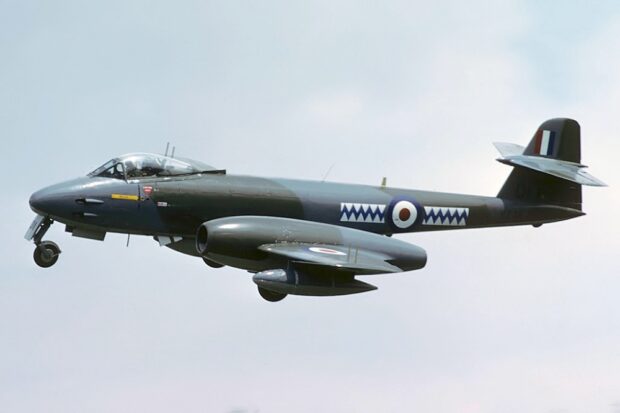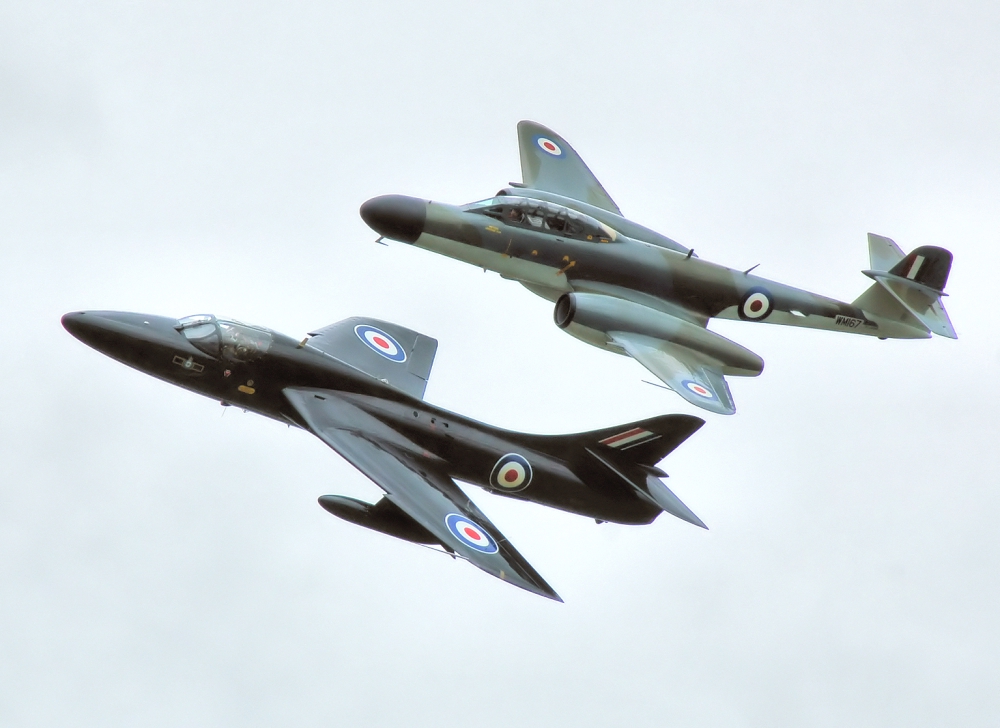The Gloster Meteor was the RAF’s first jet fighter, bringing Britain into the Jet Age. At the same time, engineers of the German Luftwaffe had been working on developing their own operational jet fighter, and the Messerschmitt Me 262 entered service a few months before the Meteor.
However, these early jets were relatively underpowered, and while the technology would launch aircraft development into a new era, their impact in the Second World War was limited – partly because of how guarded the technology was. Instead, the Meteor found great use as a test aircraft and in the export market after 1945, and saw active service once again in the early 1950s in the Korean War – this time in the hands of the Royal Australian Air Force.
The Gloster Meteor was the Allies’ only operational jet aircraft during the Second World War. The Meteor’s development was heavily reliant on its groundbreaking turbojet engines, pioneered by Sir Frank Whittle and his company, Power Jets Ltd. Development of the aircraft itself began in 1940, although work on the engines had been underway since 1936. The Meteor first flew in 1943 and commenced operations on 27 July 1944 with No. 616 Squadron RAF. Nicknamed the “Meatbox”, the Meteor was not a sophisticated aircraft in its aerodynamics, but proved to be a successful combat fighter.
In the 1950s, the Meteor became increasingly obsolete as more nations introduced jet fighters, many of these newcomers having adopted a swept wing instead of the Meteor’s conventional straight wing; in RAF service, the Meteor was replaced by newer types such as the Hawker Hunter and Gloster Javelin. As of 2013, two Meteors, WL419 andWA638, remain in active service with the Martin-Baker company as ejection seat testbeds. Two further aircraft in the UK remain airworthy, as does another in Australia
Sources: YouTube; Wikipedia


